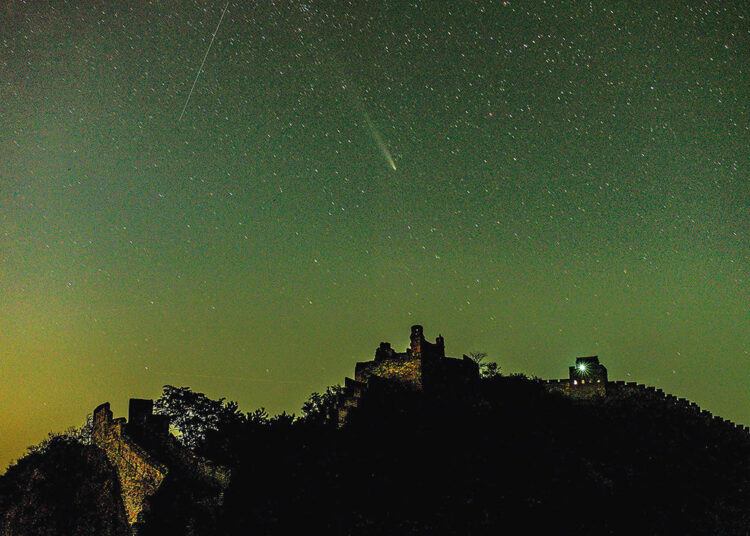Your browser doesn’t assist the <audio> component.
SPACE ROCKS collide with Earth’s environment on a regular basis. The overwhelming majority are too small to do any harm, however the threat of a bigger asteroid (or comet) wiping out an underprepared metropolis is one which area businesses around the globe are taking severely. The primary objective of such would-be planetary defenders is detection: discovering all objects able to wreaking such harm and confirming that they don’t seem to be on a collision course with Earth. The opposite objective is testing applied sciences that would both destroy any sizeable asteroids rushing in the direction of the planet or else, extra plausibly, deflect them away from it.
Just one nation has up to now examined such applied sciences in deep area: America. In 2022 its area company, the Nationwide Aeronautics and House Administration (NASA), collided a semi-autonomous spacecraft (able to self-steering in addition to being remotely piloted) right into a 160-metre-long asteroid named Dimorphos, itself orbiting a bigger asteroid known as Didymos. The Double Asteroid Redirection Test (DART) mission efficiently nudged Dimorphos astray whereas additionally holding it from flying off on an unknown, and probably hazardous, trajectory—proof that, in a real emergency, deflection is the higher a part of valour.
Two years on, China appears eager to do one thing comparable. Based on a presentation at an area science convention in South Korea earlier this 12 months, and a paper revealed within the spring, China plans to crash a DART-style spacecraft into an asteroid whereas one other automobile floats close by and chronicles the collision. The present goal is the near-Earth object 2015 XF261, a 30-metre-long asteroid tens of hundreds of thousands of kilometres away from Earth. Such small asteroids are an vital space of examine. They strike Earth way more ceaselessly (comparatively talking) than the Dimorphos-size “metropolis killers”, for a begin. And, though they don’t pack sufficient punch to annihilate a metropolis, they might trigger shock waves to radiate out from the location of affect that will be much like these produced by a mid-air nuclear detonation.
China has been signalling its intention to conduct such an experiment for a while. “Each time I look into it, it looks as if the main points have modified,” says Harrison Agrusa, a planetary scientist on the Côte d’Azur Observatory in France. “[But] they do appear severe about testing one thing.” The mission, tentatively prone to launch no later than 2030, will contain the observer craft, remotely managed from Earth, arriving on the asteroid between three and 6 months forward of its impactor accomplice, and documenting the fallout for as much as a 12 months afterwards.
Brace for affect
This mission structure is harking back to an earlier idea put ahead by NASA and the European House Company (ESA): the latter was initially presupposed to ship an observer spacecraft to Dimorphos upfront of DART. However funding disagreements inside ESA tanked the observer portion of the mission, and DART largely relied on Earth-based observations to observe the affect. (ESA has since developed Hera, a spacecraft that launched in October, to look at the affect DART had on Dimorphos.) For China’s mission, nevertheless, having a close-by observer spacecraft in place could also be vital to its success. For one factor, the meant goal can be significantly smaller and dimmer, making it more durable for a DART-like spacecraft to autonomously monitor and comply with forward of a deliberate, high-speed collision.
There are different challenges. In contrast to Dimorphos, 2015 XF261 doesn’t orbit a bigger asteroid, so whether it is deflected by the spacecraft, it isn’t clear which trajectory it’s going to wind up following. And since the asteroid is so tiny, and the impactor spacecraft will crash into it at breakneck pace, “I believe the most important concern is that they utterly destroy the asteroid,” says Dr Agrusa. This can be a chaotic consequence that planetary-defence researchers often wish to keep away from, to minimise the danger of asteroidal shards flying in all instructions. Luckily, if this had been to occur to 2015 XF261, the fragments would in all probability be too small to pose a risk to life on Earth. ■
Curious in regards to the world? To get pleasure from our mind-expanding science protection, signal as much as Simply Science, our weekly subscriber-only publication.
















